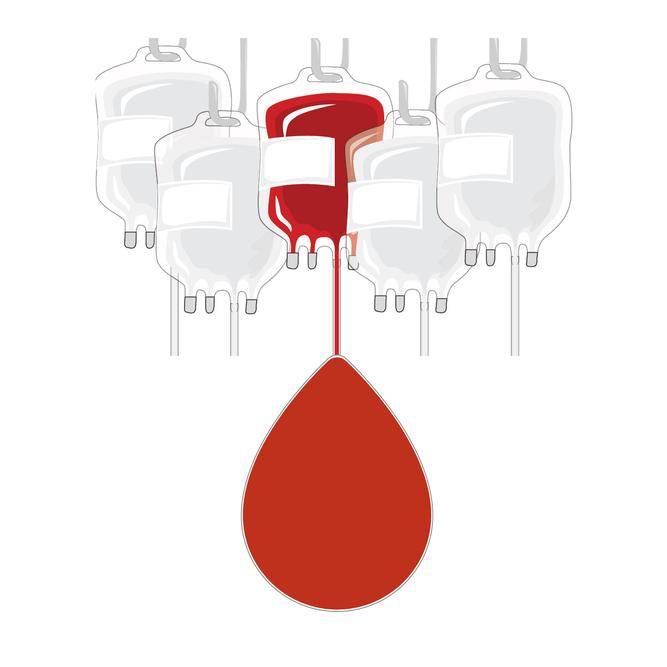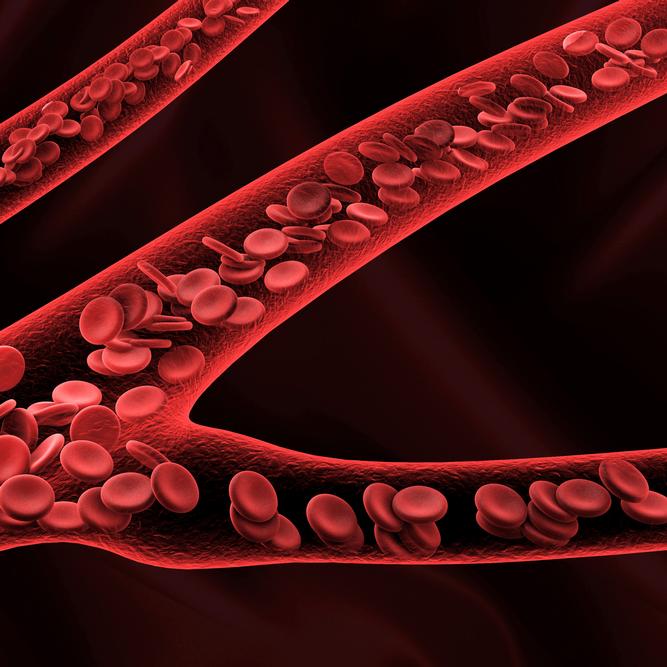
February 22, 2018
Each year in the U.S., some 20 million blood transfusions are performed. But for a growing subset of patients, such procedures are not an option due to personal preferences, religious beliefs, or biological conditions such as advanced sickle cell disease with antibodies.
In those circumstances, physicians can turn to a bloodless approach that avoids the need for transfusion. Remarkably, such approaches, which use a variety of clinical and laboratory methods, have been shown to not only reduce blood loss but also to speed recovery, minimize infection and reduce the length of hospital stays.1-2
The Center for Bloodless Medicine and Surgery is a world leader in bloodless care. Launched in 2012, it is one of only two centers nationwide to earn level 1 certification—the highest level of accreditation—from The Joint Commission. Center director Steven Frank is a renowned expert in blood conservation methods. He and his multidisciplinary team of clinical specialists harness bloodless approaches not only for routine surgeries but also for complex procedures, such as cardiac, thoracic, pancreas, liver, orthopaedic, oncologic, neuro and vascular surgeries. These are procedures that other bloodless programs may decline to consider.1, 3
The methods that underlie bloodless approaches focus on two major goals: reducing bleeding and blood loss, and optimizing hemoglobin levels and coagulation. Frank and his colleagues work toward these goals by leveraging a suite of medications, clinical tools and techniques that can be used before, during and after surgery.4

Bloodless Methods
- Managing pre-op anemia
- Surgical techniques
- Anesthetic techniques
- Minimizing blood loss
- Acute normovolemic hemodilution
- Autologous cell salvage (cell saver)
Types of Complex Procedures
- Cardio-thoracic
- Pancreas and liver
- Orthopaedic
- Neuro
- Vascular
- Oncology
Preoperative Care
A vital aspect of preoperative bloodless care is to identify and treat any preexisting anemia well in advance of the surgical procedure. Methods range from oral iron therapy to intravenous iron treatment combined with erythropoiesis-stimulating agents. A second key consideration is to quantify the expected amount of blood loss (adjusted for the type of surgery and the expertise of the surgeon) with respect to the patient’s estimated total blood volume. This can help inform assessments of target hemoglobin levels pre- and post-surgery. Another critical issue is for patients to cease anticoagulant medications or herbal remedies that promote bleeding.
Intraoperative Care
With some fairly straightforward approaches, such as avoiding hypothermia and hypertension, clinicians can minimize blood loss during surgery. More intensive measures, such as acute normovolemic hemodilution (ANH) and autologous blood salvage (also known as cell saver), can also help. In addition, the use of antifibrinolytics, such as tranexamic acid (TXA), can reduce blood loss by about 30 percent by preventing clot breakdown. At Johns Hopkins, clinicians are exploring optimal TXA dosing regimens.5 Finally, a suite of surgical methods, including minimally invasive approaches, meticulous surgical techniques, and use of topical hemostatic agents and advanced electrocautery tools, are also key components in the bloodless medicine toolbox.
Postoperative Care
A combination of approaches can be followed post-surgery to minimize blood loss. Perhaps the most significant one is to reduce secondary blood loss due to phlebotomy for laboratory tests—a significant issue, particularly among ICU patients. One practical method to achieve this is to use smaller phlebotomy tubes, including microtainers, which hold about a half-milliliter of blood—a 95 percent reduction in the amount of blood sent for testing for a typical adult patient.
For more information, visit the Center for Bloodless Medicine and Surgery.
To refer a patient, call 877-474-8558
Harnessing Bloodless Approaches Even for Complex Surgeries
Whipple procedure for pancreatic cancer
A 68-year-old woman with pancreatic cancer was evaluated for treatment at Johns Hopkins. As a member of the Jehovah’s Witness community, she chose our institution in part because of its Center for Bloodless Medicine and Surgery, but also for our expertise in pancreatic surgery. After two rounds of chemotherapy before surgery, a Whipple procedure was performed to remove her pancreatic tumor. Prior to surgery, the patient was given oral iron. ANH and autologous blood salvage were applied during surgery to conserve blood and minimize blood loss. In addition, meticulous surgical technique, topical hemostatic agents, maintaining normothermia and minimizing secondary blood loss helped maintain the patient’s hemoglobin level, which was a healthy 10.3 upon discharge.

Five-level spinal fusion
A 70-year-old male with a history of diabetes, renal failure and kidney transplant presented with pain and weakness in the spinal region. An MRI scan showed significant destruction of the L2-L3 discs from a tumor, and a CT scan revealed fractures of both L2 and L3 vertebral bodies. The clinical care team recommended an instrumented spinal fusion, and the patient requested not to receive blood transfusions for personal reasons.
An array of surgical and bloodless methods were used, including a minimally invasive approach (with a O-arm and a small incision), a meticulous surgical technique, bipolar hemostatic cautery, TXA, controlled hypotension, normothermia and autologous blood salvage. Upon discharge, the patient’s hemoglobin was more than adequate at 10.1.
The methods that underlie bloodless approaches focus on two major goals: reducing bleeding and blood loss, and optimizing hemoglobin levels and coagulation.
References
Frank SM et al.: Risk-adjusted clinical outcomes in patients enrolled in a bloodless program. Transfusion 2014, 54:2668-77.
Resar LM et al.: Bloodless medicine: Current strategies and emerging treatment paradigms. Transfusion 2016, 56:2637-2647.
Resar LM, Frank SM: Bloodless medicine: What to do when you can't transfuse. Hematology Am Soc Hematol Educ Program 2014, 1:553-8.
Frank SM, Scott AV, Resar, LM: Bloodless medicine and surgery: Top 10 things to consider. Anesthesiology News 2016, http://anesthesiaexperts.com/uncategorized/bloodless-medicine-surgery-top-10/.
Johnson DJ et al.: High-dose versus low-dose tranexamic acid to reduce transfusion requirements in pediatric scoliosis surgery. J Pediatr Orthop 2017, 37:e552-e557.

